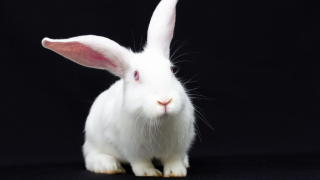
Our views have been sent to the European Commission as part of their ‘Call for Evidence’ to evaluate whether the current Cosmetics Products Regulation (CPR), which includes the 2013 ban on the use of animals in testing cosmetics, is fit for purpose or needs revision.
Despite the CPR, the way that the EU’s main chemicals law REACH (Registration, Evaluation, Authorisation and Restriction of Chemicals) has been implemented means that cosmetics ingredients are still being tested on animals.
We want to see the CPR strengthened and properly aligned with other regulations such as REACH. This will simplify matters for industry and regulators and reduce the burden on the legal system.
We support comments made by other respondents to the Commission’s call, that new data must come from non-animal methods. It has also been noted how the animal testing ban has helped to drive innovation in the cosmetics sector. Overall, it’s clear that action is needed – a lack of coherence with REACH and other EU chemicals legislation has been repeatedly highlighted by NGOs, public authorities and businesses alike.
In addition, the EU cosmetics testing bans have been a model for many similar bans across the world. It is of utmost importance, not least for the credibility of the EU, that they achieve what they set out to do.
The legislation which introduced the bans, when they came into force in 2003, included that ‘it is essential that the aim of abolishing animal experiments be pursued and that the prohibition of such experiments becomes effective’. The EU also clearly stated that ‘there can be no new animal testing for cosmetics purposes in the Union – be it for cosmetics products or ingredients thereof’. It also specified that ‘if product safety cannot be demonstrated (without animal testing) the product simply cannot be placed on the market’.
Sadly, the reality has proved to be very different. The 2023 ruling against the German manufacturer Symrise seriously compromised the cosmetics bans, as the Court decided that even ingredients used exclusively in cosmetics are not exempt from REACH requirements to supply animal test data for assessing worker safety and environmental protection. This ruling overlooked the fact that it is even written into the REACH regulation, which came into force after the cosmetics bans, that the prohibition of animal testing for cosmetics takes precedence.
In our submitted response to the Commission, we highlighted two animal tests which are routinely required under the REACH regulation, and which could therefore be required for ingredients used in cosmetics products. In a commonly used test to study effects on developing foetuses, which can use 1100 rats or 700 rabbits, pregnant females are force-fed a chemical for several weeks, which can cause significant distress and injury, before they and their unborn pups are killed and dissected.
In another study, which investigates a chemical’s effect on the reproductive system and can use at least 960 rats, adult rats are force-fed a chemical for a ten-week period during which they mate and the females give birth. The parents and their pups are monitored for abnormal symptoms such as repeatedly walking in circles and changes in their skin, and the pups are further subjected to distressing behavioural tests. All animals are killed at the end of the study.
Our Director of Science and Regulatory Affairs, Dr Emma Grange, said: “The CPR is currently not fit for purpose, and, along with adjustments made to other chemicals regulations such as REACH, needs to be revised. Now is the right time to finally deliver on the original policy intent, and bring an effective and total ban on animal testing for cosmetics. This is what both the citizens of Europe and Members of the European Parliament have said they want, and the Commission say has been achieved.
“A revision to the CPR can strengthen it against being undermined by other regulations, as well as simplify its implementation where overlaps with other regulations could occur. As well as protecting against harm done to animals for the sake of cosmetics, we have seen how the bans have driven innovation and the development of non-animal testing methods. It is crucial that the EU now takes this opportunity to finally realise their ambition on cosmetics and animal testing.”
